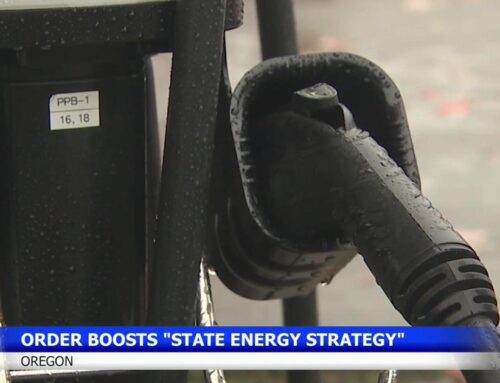Tackling Climate Corruption Is Essential To Saving The Planet
March 30, 2025
Global temperatures continue to rise, with each year over the past decade being warmer than the last. While policy and technology are central to climate action, one critical issue has yet to receive sufficient attention: climate corruption.
Corruption and climate change are closely linked considering that corruption can worsen climate change while climate change can create conditions that encourage corruption to thrive.
A 2024 academic study investigating the link between corruption and climate risk, drawing on data from 171 countries, found that there is “a significant positive association between corruption levels and climate risk, indicating that corruption amplifies both the frequency and consequences of climate disasters.”
Despite these connections, the impact of corruption on climate efforts rarely gets the attention it deserves.
Climate Corruption
Transparency International uses the term “climate corruption,” to refer to “the abuse of entrusted power for private gain [which] results in climate injustice and [hinders] climate efforts.”
Corruption in the context of climate change plays out in a number of ways, including the misappropriation or embezzlement of funds intended for climate projects, lobbying by corporations to weaken climate mitigation measures and environmental regulations, offering or receiving bribes to influence the allocation of climate projects or grants, greenwashing, among others.
This think piece by the UNODC, OECD and World Bank on the impact of corruption on sustainable development, emphasizes that “more can and should be done to address corruption and its connection to sustainable development to ensure that greater investment comes into countries and that funds, including any new investments, are not lost to corruption.”
Misappropriation of funds is a particularly concerning issue. Due to the emergent nature of climate change, a lot of resources are being channelled towards supporting projects and initiatives aimed at mitigating its effects, increasing the risk of misuse.
According to the United Nations Environment Programme, countries will need to spend $387 billion a year by 2030 to manage the risks and impacts of climate change effectively. Where such substantial funding flows, so does the risk of corruption, which diverts resources away from climate projects and erodes public trust.
One example is Australia’s Emissions Reduction Fund (ERF). Researchers at the Australian National University have criticized the ERF for lacking integrity and wasting billions on ineffective carbon credits. They estimate that 70-80% of these credits go to projects that fail to deliver genuine emissions reductions, instead funding activities that would have happened anyway or projects with no lasting impact.
Another example is the misappropriation of funds from a $7.8 million project in Russia, funded by the Global Environment Facility and managed by the United Nations Development Programme, which aimed to improve efficiency standards for lighting and household appliances. Despite spanning seven years, it failed to meet its emission reduction targets, and there are “strong indicators of deliberate misappropriation” of funds.
Corporate Anti-Corruption Strategies to Tackle Climate Corruption
Climate corruption is however not limited to government and international organizations’ projects, it also manifests in the corporate environment. A 2024 study of Chinese-listed firms suggests that climate risks can lead to corporate fraud by increasing pressures relating to performance, debt financing, and shareholder demands.
Greenwashing is especially prevalent in the corporate sector. Notable examples are Volkswagen’s installation of “defeat devices” in their diesel cars to manipulate emissions tests, misleadingly marketing them as environmentally friendly, and the misrepresentation of ESG-related investments by Active Super, claiming to avoid harmful industries while holding stakes in tobacco, Russian oil and gas, and coal companies.
There are also reported instances of misappropriation of climate funds in the corporate sector. For instance, in 2018, Michael Rufatto, president of the North American Power Group Ltd was found to have misused funds received from the Department of Energy for a carbon sequestration project, diverting the money for personal expenses such as legal fees, car payments, jewelry and international travel.
To combat climate corruption, here are four steps companies can implement:
- Corruption risk assessments: While many companies already have an anti-corruption framework in place that includes risk assessments, these assessments should incorporate targeted strategies to capture climate-related risks. Risk assessments can help identify aspects of a company’s climate efforts that are susceptible to corruption and enable companies to tailor their anti-corruption strategy to address these unique challenges.
- Training on climate corruption: Employees and board directors may not be familiar with the dynamics of climate corruption. Providing training on how to identify climate-related corruption and the company’s policies and processes for addressing it, is essential for building awareness and readiness across the organization.
- Cross-functional collaboration between ESG and integrity/compliance teams: Corporate ESG teams and integrity/compliance teams often operate in silos, which can lead to compliance staff not paying attention to corruption risk within climate initiatives and ESG staff not being aware of climate corruption as a risk. To address this, companies should foster cross-functional collaboration and knowledge-sharing, ensuring that both teams work together to combat climate corruption.
- Include accurate climate corruption disclosures in ESG reports: Although voluntary ESG frameworks like the GRI and SASB acknowledge corruption as a sustainability issue, many companies do not provide adequate disclosures concerning their anti-corruption efforts and challenges. However, by publicly disclosing measures taken to mitigate and address climate corruption risks in ESG/Sustainability reports, companies can demonstrate their recognition of this critical risk and show stakeholders their commitment to transparency and accountability. Companies should also be vigilant about greenwashing and take proactive steps to have their ESG reports verified by independent third parties.
The world is already grappling with the urgent problem of mitigating climate change, and every dollar spent in doing so must be spent wisely. To make every dollar count, we need to confront all forms of climate corruption head-on, while holding on to our vision of a greener, more sustainable future.
Search
RECENT PRESS RELEASES
Related Post




